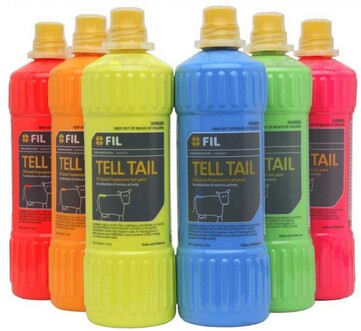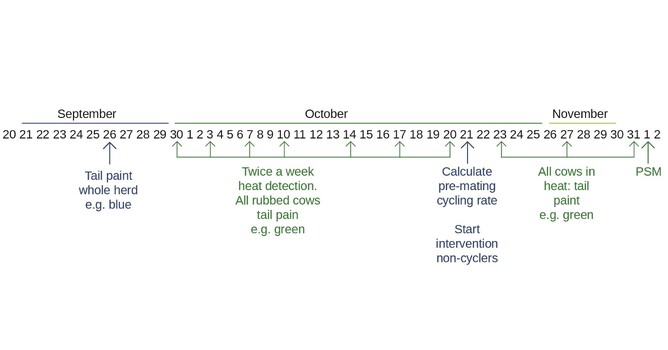If you don’t want to deal with a prolonged mating period resulting in less milk next season, nor with ongoing non-cycling and mating costs, you need to get all of your cows in-calf early.
Aim for these reproduction targets:
- A good conception rate of 55-60%
- A 3-week submission rate of around 90%
Achieving these targets will put you on the right track to achieving the target 6 week in-calf rate of 78%.
It can be difficult to directly change your conception rate, as many of the factors that affect conception rates are out of our control, or are only able to be manipulated indirectly. Submission rate, however, is one of the things that we are able to have control over. To achieve a good 6-week in-calf rate the 3-week submission rate needs to be around 90%, which means almost every cow is mated within the first three weeks of the mating period. To achieve this, obviously, all cows need to be cycling within that period and non-cyclers have to be treated before the planned start of mating.
Good mating begins with good management: we have to detect any problems early to have the opportunity to solve them!
Before you start:
Some causes of non-cycling are easy to prevent with good management. So, before you start your heat detection, make sure:
- The mineral status of your cows is optimal for mating, an adequate level of selenium and copper is needed for good fertility.
- Your cows are clean and do not have endometritis. This can be checked by metrichecking. Treat all cows that have developed endometritis 2-4 weeks post calving.
- You identify the late calvers with tail paint (e.g. yellow), so you can include them in your pre-mating plan.
Pre mating heat detection – tail paint
The method of detecting non-cycling problems is simple: heat detection with tail paint (also see the example calendar).
Firstly tail paint all cows with one colour (e.g. blue), preferably 35 days before planned start of mating. Check tail painted cows for rubbed tail paint at least twice weekly until the planned start of mating date and record those heats. Any rubbed cows should be repainted with a second colour (e.g. green), so you can easily identify the cycling cows that will be ready to be mated from your planned start of mating on.
After 25 days of heat detection, your blue cows will form your non-cycler group. Those cows need an intervention to get them cycling and mated within the first weeks of mating. As mentioned above, it is also useful to paint your late calvers a third colour, so those are easily identified as well.
Around 10 days before your planned start of mating, you can calculate your ‘pre-mating cycling rate’. This is the percentage of cows in your herd that have shown a heat during the first 25 days of your heat detection. The target is at least 75%. If less than 75% of the herd have shown a heat you either have a high level of non-cyclers in the herd, or your heat detection was not effective. Discuss your pre-mating plan with your KeyVet.
Intervention
If you want to treat your non-cyclers, it is very important to treat them early so they are inseminated in the first few days of mating. This means starting the program 10 days before your PSM. Treating non-cyclers will only be profitable through early intervention.
The economic benefits of non-cycler interventions lay in:
- More cows getting in-calf early in the AB period
- Early calving means extra days in milk with higher production
- Providing more replacement heifers
- Potential for a shorter AB period
If you haven’t done it yet: make your pre-mating plan now!
- Bianca MacKintosh


